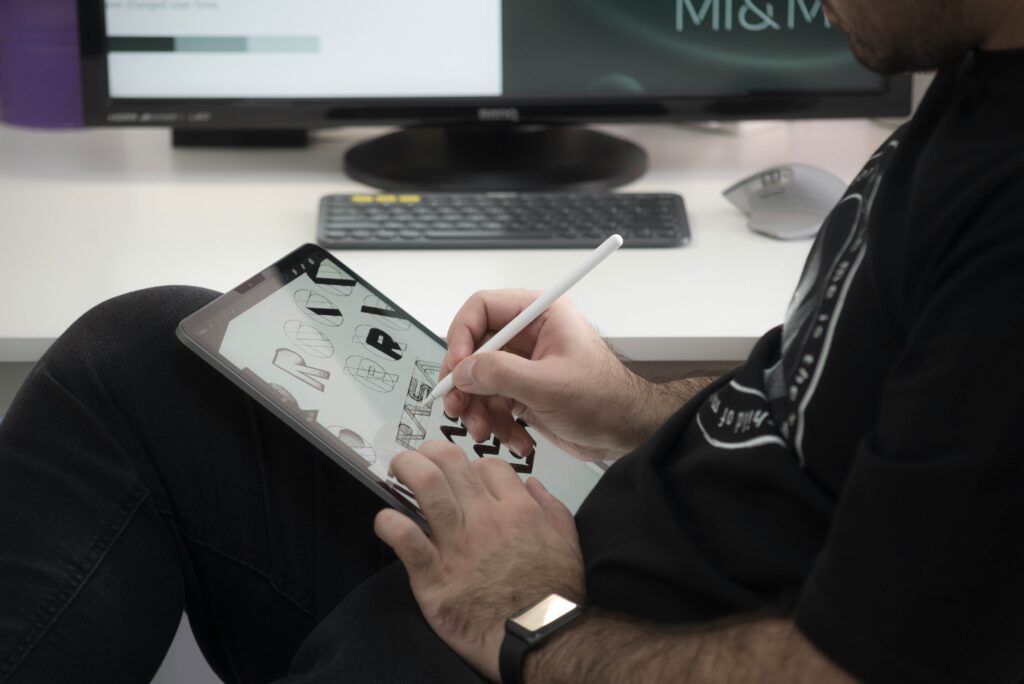Designing a digital product on your own can feel overwhelming, but with the right tools, you don’t need a full team to bring your ideas to life. Whether you’re building a website, a mobile app, or an online service, the right software can help you streamline the process, from wireframing to final launch.
This guide will walk you through essential tools for solo creators, ensuring you can design, prototype, and test your digital product efficiently—all without relying on a team.
1. Figma – The Best All-in-One Design Tool
If you need a single tool to handle everything from brainstorming to final UI design, Figma is your best bet. It’s cloud-based, meaning you can access your work from anywhere, and it allows for real-time collaboration (if you ever bring in a developer or reviewer).
Why Figma?
- User-friendly interface with drag-and-drop functionality.
- Built-in prototyping features—no extra software needed.
- Free plan available, perfect for solo designers on a budget.
- Huge community of pre-made UI kits and templates to speed up your work.
If you’re new to UI/UX design, Figma’s learning curve is manageable, and you can find plenty of free tutorials to get started.
Related: If you’re planning to launch a blog alongside your digital product, check out The Ultimate Guide to Writing Viral Blog Posts to attract traffic from day one.
2. Whimsical – Brainstorm and Plan with Ease
Before you dive into design, you need a clear roadmap for your product. That’s where Whimsical comes in. It’s an easy-to-use tool for creating flowcharts, wireframes, and mind maps, helping you organize your ideas visually.
Why Whimsical?
- Drag-and-drop functionality makes wireframing quick.
- Templates for user journeys, mind maps, and flowcharts.
- Lightweight and fast compared to more complex planning tools.
If you’re someone who needs a structured thought process before designing, Whimsical helps you lay the groundwork before jumping into Figma or another design tool.
Related: Want to monetize your skills while working independently? Learn How to Market Yourself and Get High-Paying Clients as a solo entrepreneur.
3. Framer – For Interactive Prototypes Without Code
Once your designs are ready, you’ll need a realistic prototype to test user interactions. Framer is a fantastic option for solo creators who want to add animations and interactions without writing a single line of code.
Why Framer?
- Lets you create fully interactive prototypes.
- Supports gestures, animations, and real-time feedback.
- Requires no coding but allows customization with JavaScript if needed.
Unlike static designs, Framer lets you simulate a real product experience, helping you validate your ideas before investing in full development.
Related: Looking for more high-income skills? Explore The 3 High-Income Skills That’ll Be in Demand for the Next 10 Years to future-proof your career.
4. Tilda – Build and Publish Websites Without Developers
If your digital product includes a website, Tilda is a game-changer. It’s a no-code website builder with an emphasis on clean design and smooth user experiences.
Why Tilda?
- Drag-and-drop builder with professional design templates.
- SEO-friendly features built-in.
- Integrations with forms, analytics, and e-commerce tools.
For MVP (Minimum Viable Product) websites, Tilda offers a faster alternative to WordPress or Webflow, letting you launch without hiring a developer.
Related: No traffic yet? No worries! Check out Zero Traffic? No Problem. Make Affiliate Sales Without an Audience to generate income from your site.
5. Notion – Stay Organized Like a Team
Solo creators often struggle with managing multiple tasks, from brainstorming ideas to tracking progress. That’s where Notion shines. It combines note-taking, project management, and database functionalities in one place.
Why Notion?
- Use templates for task management, content planning, and product roadmaps.
- Syncs across all devices, keeping you on track.
- Easy to link research, user feedback, and design notes together.
If you tend to get overwhelmed managing different aspects of your project, Notion helps you stay structured and focused.
Related: Want to turn your knowledge into income? Learn How to Create and Sell Online Courses Without Teaching Live and monetize your expertise.
6. Hotjar – Understand Your Users with Real Data
After designing your product, you need real-world feedback to refine it. Hotjar allows you to track how users interact with your website or prototype through heatmaps, session recordings, and surveys.
Why Hotjar?
- Visualizes where users click, scroll, or drop off.
- Helps you spot usability issues early.
- Easy to install on any website or web-based app.
For solo designers, this tool eliminates the need for a dedicated UX research team, giving you direct insights into user behavior.
Related: Ready to scale your income? Discover The ‘Lazy’ Affiliate Marketing Strategy That’s Secretly Genius to build passive revenue streams.
Final Thoughts: You Can Build Without a Team
The right tools can replace many roles that a full team would typically handle. Whether it’s designing in Figma, planning in Whimsical, prototyping in Framer, or launching with Tilda, you have everything you need to create a functional and polished digital product.
The key is to start small—test your ideas, refine them based on feedback, and use tools that streamline the process. You don’t need a big team; you just need the right strategy and the right tools.
Which tool are you going to try first?



